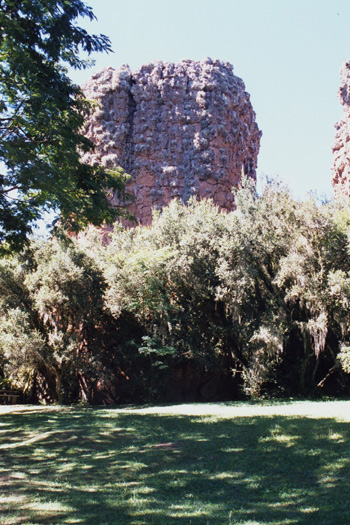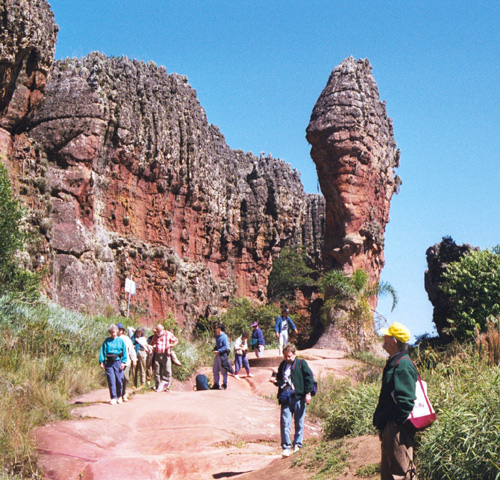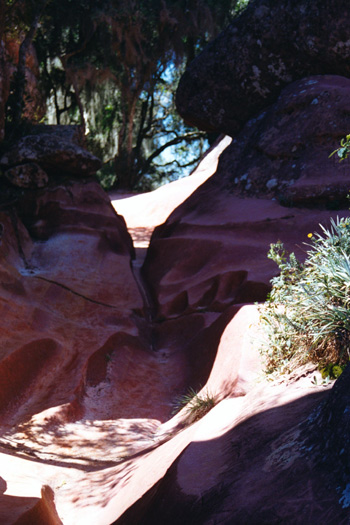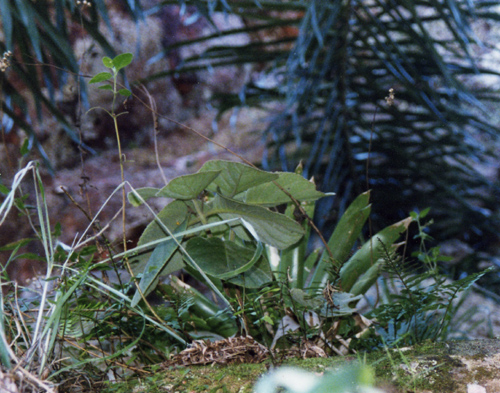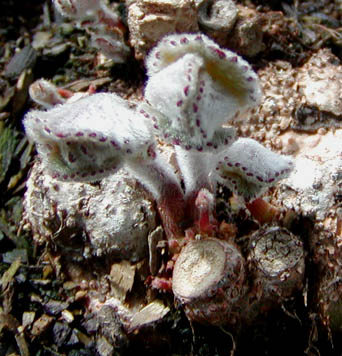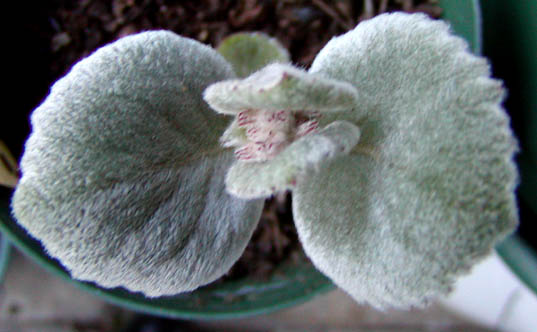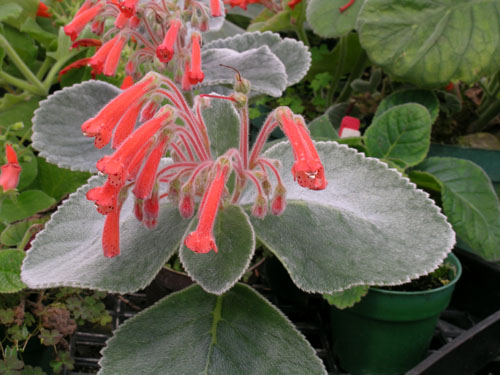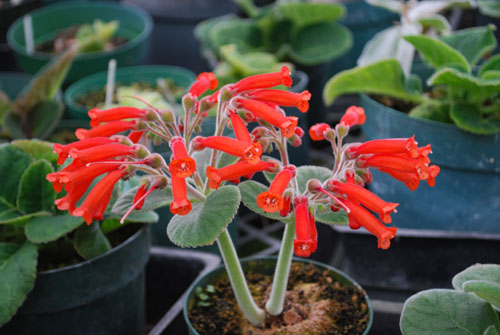Sinningia canescens
- In the wild
- In the tame
- In Mike Kartuz's garden
- Sinningia leucotricha
- Feature table
- Publication and etymology
In the Wild
This is a big chunk of weathered rock in Vila Velha State Park, in Paraná state, Brazil, wherein can be found the reclusive Sinningia canescens.
This park features a lot of interesting geology, mammalian pests called coatis, and (on occasion) gesneriad hunters. In addition, there are rhipsalid cacti, such as Lepismium cruciforme, which are normally epiphytes, but here can be found growing on steep hillsides.
